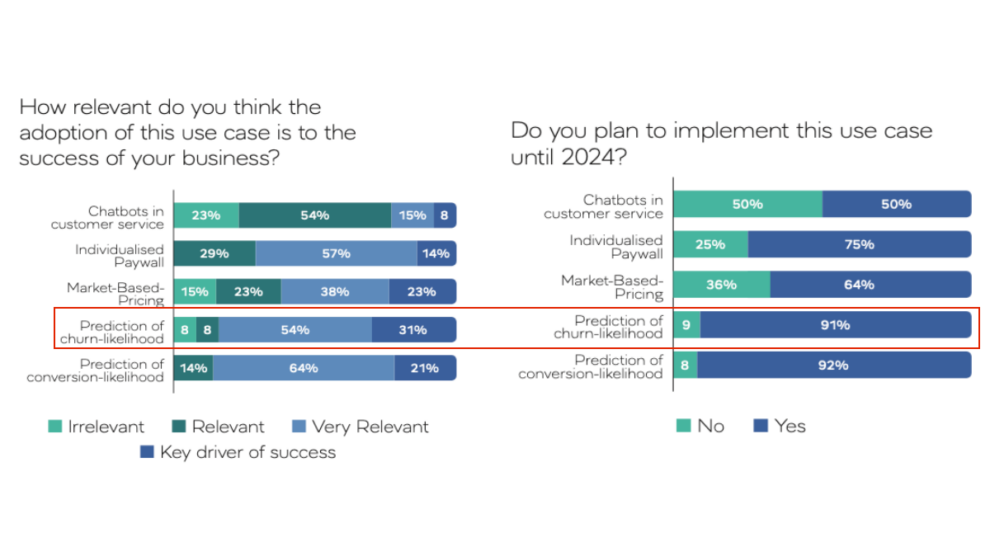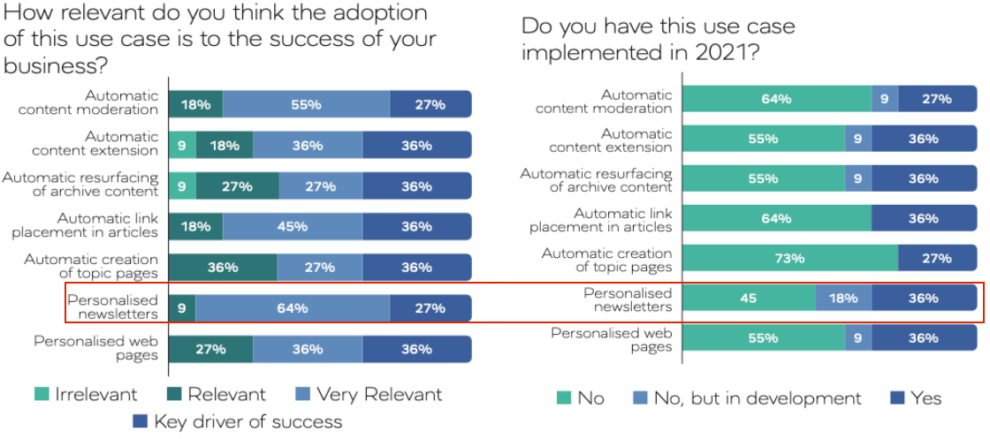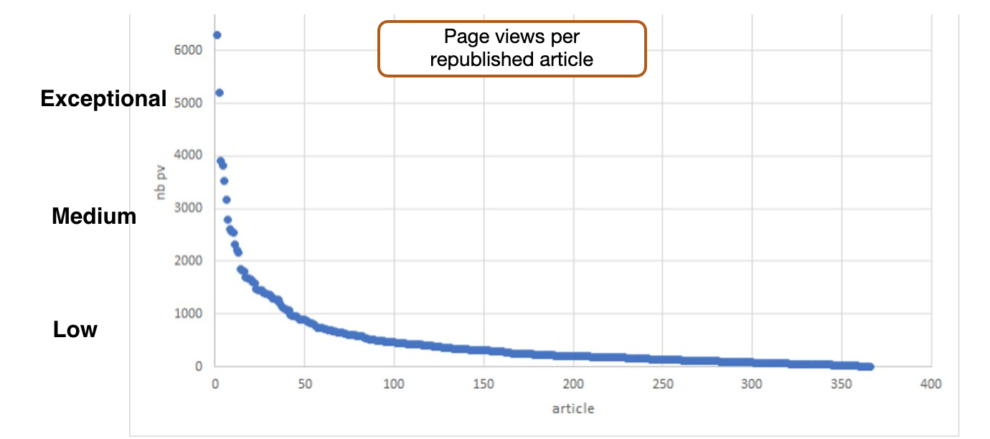|
Getting your Trinity Audio player ready...
|
77% of publishing executives told WAN-IFRA that AI will be important for the success of their business in 2024. But, nearly 50% of the same cohort said they had not yet explored any AI technology. Many cited internal challenges such as a lack of resources as key reasons for this.
For publishers wishing to adopt AI, a good place to start is in areas like churn prediction or newsletter personalisation.
Churn prediction seen as key driver for success
In 2019, the Arizona Republic noticed that 42% of their subscribers were “zombie readers”, who visit a subscribed news site less than once a month. Other found this number to be even closer to 50%.
When half of your readers are “zombies”, activating them becomes a key revenue driver. Greg Piechota wrote in a recent INMA report that churn is “perhaps the biggest single risk for the news business going forwards”.
The good news is that technology can help. 85% of publishers believe algorithms that can predict churn are very relevant or even key drivers for the success of their business. Being able to spot readers at risk of churning early on, can help publishers take actions to reengage them.

German publisher Kölner Stadt-Anzeiger Medien (KSTA) ran an experiment to understand the power of churn prediction. Using the Twipe Readers@Risk predictive algorithms, KSTA sent targeted push messages and communications to readers at risk to churn. A control group of risk readers where no targeted messaging was done, was studied in parallel. The observed churn rate for readers exposed to targeted communication was up to 5% lower than for non exposed readers.
Personalised newsletters for activating “zombies” and increasing habitual readers
The positive business results of using personalised newsletter have been covered often. But 63% of publishers are yet to experiment with personalised newsletters despite an overwhelming 91% finding personalised newsletters very relevant or key for their business success.

Activation of “zombies” and increase in habitual readers are results we have seen with all publishers using the JAMES newsletter personalisation technology . The Hybrid v2 algorithm used by JAMES is the result of a year long research where 18 different experiments were ran with various personalisation algorithms. Hybrid v2 has outperformed other models with its formula that combines personal interest and trendiness.
Dutch Publisher NRC observed a 15% click rate (click-to-send) for automated and personalised daily newsletters based on JAMES Hybrid v2. This is significantly higher than the 8% seen elsewhere. UK publisher Daily Mail also saw a doubling of habitual readers on cohorts exposed to JAMES newsletters.
Not only do personalised newsletters boost engagement and build habits, but they have also helped to reduce churn. The Times of London found a 49% lower churn among cohorts exposed to the JAMES Personalised Newsletters.
Surfacing archive content 5 times quicker
Following the popularity of Timehop, Facebook and Apple cottoned on with their memories features allowing users to look back at previously posted content. 64% of publishers do not currently have automatic resurfacing of archive content. But, innovative publisher Ouest-France realised the potential of this avenue. They chose to undergo an innovation project together with our teams at Twipe to give new life to their archived content. This did not only include resurfacing evergreen content but also assigned a content monetisation predictive score to more than 30 million articles.

Following this process, over 500 articles have been republished. Ouest-France‘s Project and Incubation Manager Jean-Pierre Besnard told WAN-Ifra that journalists currently republish round 20 of these archive articles a week. Articles that received a high content monetisation predictive score tended to feature a strong image and were often related to a local event of celebrity.
The editorial team have republished 46% of the articles with high monetisation scores and some of them outperformed newly published articles. The tagging has enabled journalists to surface the correct articles 5 times quicker than journalists working independently. Away from republishing, the search engine built as part of the project has also been particularly useful for journalists to be inspired in their content production process.
82% of publishers plan to follow Ouest-France an experiment with automatic resurfacing of archive content by 2024. If you are one of them, don’t hesitate to reach out to our team.
Where to get started?
Getting started with AI projects can often be the hardest position to be in. No newsroom should be discouraged from experimenting with AI, as both newsrooms big and small have had success. 67% told WAN-IFRA that their AI tools have been implemented through working with external platform partners, like Twipe. This approach is particularly useful as it allows newsrooms and data teams to learn from peers in the industry and see how it has impacted them.
I think the best way to work is to mix both. We know our job, but sometimes it’s very interesting and rich to work with someone outside of the organisation.
Jean-Pierre Besnard, Project and Incubation Manager at Ouest-France
With proven results, this is something which saves both time and money so that teams can focus on other important aspects of their offering.
Matthew Lynes
Media Innovation Analyst @ Twipe
Get Twipe’s weekly insights on digital publishing, artificial intelligence, and paid content in your mailbox. Sign up here.


